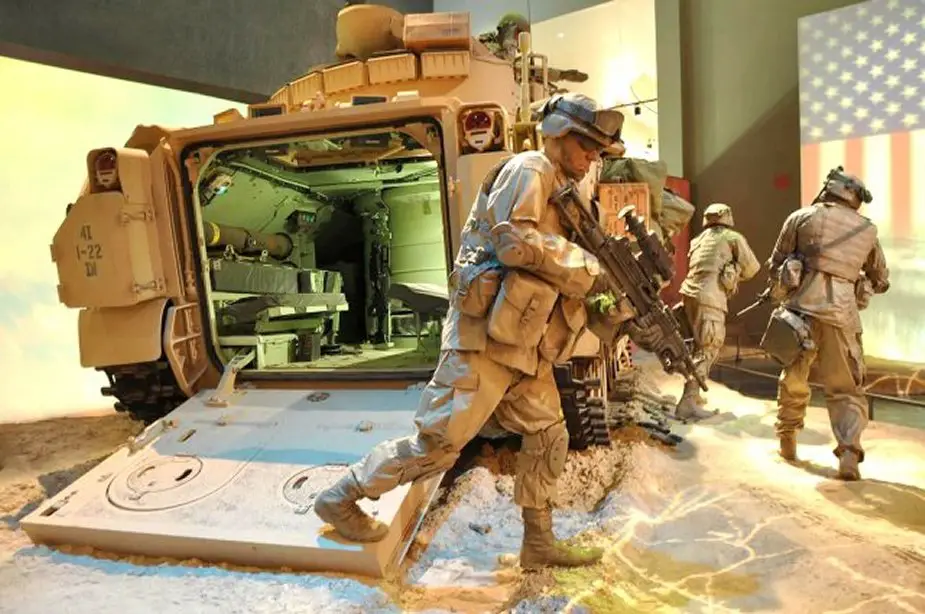Breaking news
TRADOC to take responsibility for US Army Center of Military History.
The Army Center of Military History will realign under Army Training and Doctrine Command April 1 to better promote history at schoolhouses across the force. The center's mission will remain the same and its activities will continue at Fort Belvoir, Virginia; and Fort McNair in Washington, D.C. Sean Kimmons, Army News Service, explains on U.S. Army’s website.

The Army Center of Military History will realign under Army Training and Doctrine Command April 1 to better promote history at schoolhouses across the force (Photo credit: National Infantry Museum )
Under TRADOC, a four-star command, the center will have further access to inspire and educate Soldiers from trainees in basic combat training to officers at staff colleges. "It allows us to much more effectively do what we do on behalf of the Army," said Charles Bowery Jr., the center's director. There are currently no plans to physically relocate or eliminate the center's 250 employees due to the realignment, he added.
The Institute of Heraldry, a CMH directorate for the past three years, however, will remain at the Department of the Army headquarters level under the Office of the Administrative Assistant to the Secretary of the Army. Other key changes will mainly occur behind the scenes, such as new procedures for reporting and administrative support, funding and lines of accounting, and new rating officials for GS-15 and above employees.
The center's move is part of reforms being made by the secretary of the Army to ensure the headquarters level is focused on policy and oversight, and commanders at lower levels are properly equipped to carry out their functions. "We're kind of the standard bearer of reform for the Army in realigning to TRADOC," Bowery said.
The modern organization of Army historical efforts dates back to World War II as the service sought to record the official history of the war, according to the center's website. Over the decades, the center expanded that role into military history education, introduced automated data-retrieval systems, and currently manages the Army's museum system. The museum system includes 47 Army museums and 176 other holdings, which have around 500,000 artifacts and over 15,000 works of military art.
The center is also behind the National Museum of the U.S. Army, which is under construction at Fort Belvoir and projected to open in 2020. With 750,000 visitors expected to visit each year, the museum will serve as a "launch point" for TRADOC to engage the public about the Army. "We look at the national museum as a premiere platform to advertise the Army to the nation and the world," Bowery said.
Other Army museums may also see changes as the center plans to look at some management reforms to ensure they run more efficiently. "It's all about funding the secretary of the Army's priorities," Bowery said, "and we want to make sure we're good stewards of the money we receive to run the museums." In the publishing realm, he added, the center will also embark on a new series telling the histories of the wars in Iraq and Afghanistan. The books, which will be called the "Tan Books" after the center's "Green Books" series on World War II, will eventually be available online and in print when finished.
Army Recruiting Command, which is part of TRADOC, has also expressed interest in having the center help tailor historical content for young trainees in basic combat training. "We've already taken some baby steps toward doing that," he said. "We're talking about things like developing apps and publications that are accessible to different audiences and are inspiring."
Historical content is often made for a variety of audiences. Officer trainees or officers attending staff colleges, for instance, may receive more specific details on previous battles, campaigns, and strategic, operational and tactical decisions. "You want them to learn from those past decisions, so that their critical thinking is sharpened and that they make better decisions in the future," he said. Noncommissioned officers, he noted, may also receive that sort of information as well as history that serves to inspire.
Being a part of TRADOC, the center will be able to expand its reach to those audiences. "It's really a golden opportunity for us to influence the Army in a much deeper way," Bowery said.




























